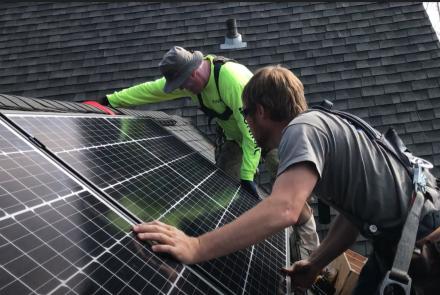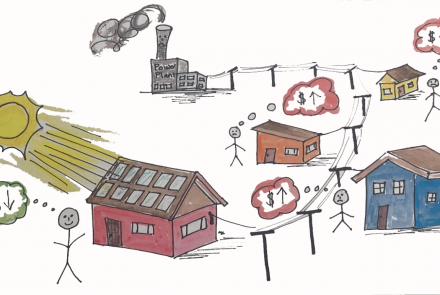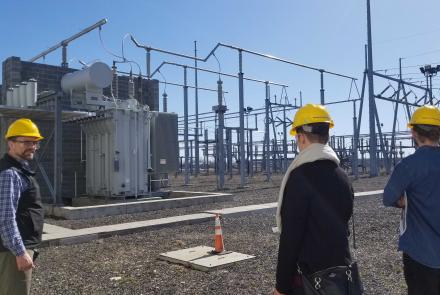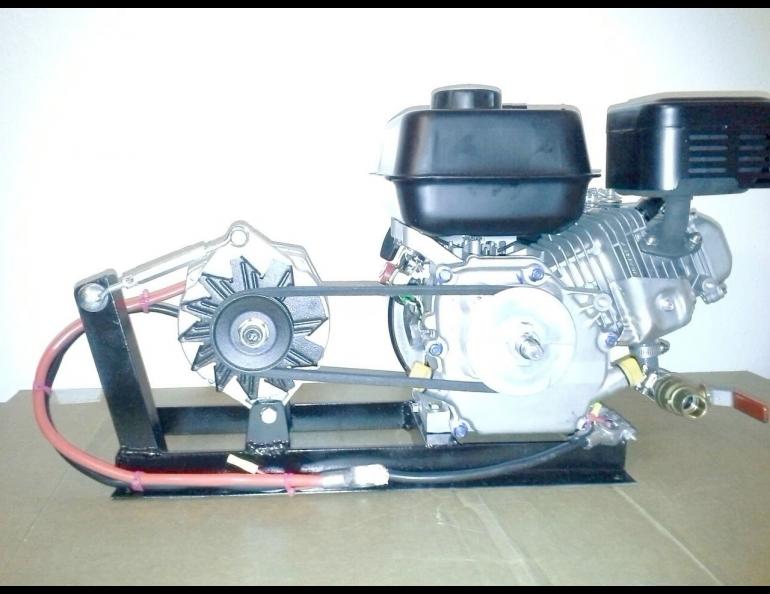
Intermittent Energy
There are Alaskans who comfortably live off the electrical grid year-round. Others live in summer mining camps, research settings, fish camps or lodges and need seasonally reliable lighting, heating, means of cooking and refrigeration. Possibly some of these locations are also refuges during emergency disasters. Many residents have spent years tinkering with the “right setup” of solar panels, propane, wind or even micro-hydro generation that augments generator usage, thus effectively setting up their own grid. This takes observation, time and money at various times of the year to install, operate and maintain.
Having the right energy appliances to match your demand can make things much easier. When estimating the energy need for any site, the first step is to list what functions will require energy. Next, think through the best types of fuels for your functions and inventory and add to the implements you have. Finally, realistically calculate what availability of adequate energy resource and sites will work in your immediate area. Through thinking about seasonal usage, you can adjust your demand.
For instance, using heated fluids or electrical/photovoltaic output from portable solar panels may be limiting in the shoulder seasons of autumn and spring. There will be minimal output of solar generation a month and a half on either side of Dec. 21. If you are in an area that is windy, that seasonality will also affect the amount of wind energy you will be able to get. Checking out the area with an anemometer will allow you to know what you can expect from month to month (providing your battery setup stays robust).
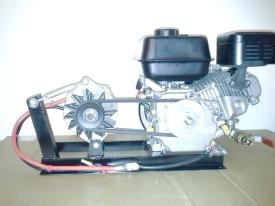 Wood or brush is another source for contributing even electricity and is abundantly available in most of the state. While wood does not directly charge batteries, recently marketed gasifiers are available for purchase online or in outdoor stores. Though there are many designs for home-fabricated gasifiers, one turnkey unit for producing electricity from biomass is the Big Dragon gasifier.
Wood or brush is another source for contributing even electricity and is abundantly available in most of the state. While wood does not directly charge batteries, recently marketed gasifiers are available for purchase online or in outdoor stores. Though there are many designs for home-fabricated gasifiers, one turnkey unit for producing electricity from biomass is the Big Dragon gasifier.
It is easy to learn the operation and utilize the unsophisticated parts, which makes repairs affordable and timely. It is also very easily transportable by one person. This gasifier utilizes a 1 meter tall chamber for pyrolysis. This cylinder can hold 5 gallons of feedstock. A simple conduit a half a meter long transfers the gases to another meter-high cylinder, which holds liquid for filtration. It allows for wood gas tars to adequately be sent to a trap and sequestered from the wood gas. It is then easy to port over to a 110/220 VAC dual propane generator with a simple carburetor conversion kit; or it can be pushed through a 6.5 hp small engine which runs a 12VDC alternator for battery charging (Fig 1).
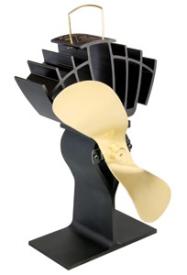 Two other products that utilize thermoelectric generation from hot/cold plates to create trace electrical current for immediate use are the TEG Devil Watt generator and the Caframo Ecofan, which can be adhered to the side or placed on top of a woodstove. The Devil Watt utilizes water cooling for more efficient electrical generation. Similar items can supply (depending on the configuration) 10 W to 100 W, 12VDC of electrical production. The electrical generation in the Ecofan allows it to distribute heat from woodstoves throughout a room without any battery or 110 VAC supply.
Two other products that utilize thermoelectric generation from hot/cold plates to create trace electrical current for immediate use are the TEG Devil Watt generator and the Caframo Ecofan, which can be adhered to the side or placed on top of a woodstove. The Devil Watt utilizes water cooling for more efficient electrical generation. Similar items can supply (depending on the configuration) 10 W to 100 W, 12VDC of electrical production. The electrical generation in the Ecofan allows it to distribute heat from woodstoves throughout a room without any battery or 110 VAC supply.
One last note on wood for space heat or electrical (regardless of the technology or storage): The energy you are able to utilize is going to depend on the dryness of the wood. You want to be sure and have moisture levels down to 20% or less. You can check out levels with a simple moisture meter which will poke two probes into the wood and give you a digital reading.
Water power can also be considered in certain locations with the simple process of utilizing fresh water to spin small DC turbines for 5 W USB output in steep sloped creeks or water falls. As more USB port products, such as string lighting, fans, shortwave radios, and of course cell phone chargers, expand in the marketplace, small semi-portable 12VDC battery systems allow for trickle charging and later use.
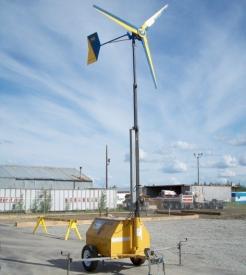 A mobile unit that makes use of several of these ideas is the Ellanna Mobile Power Station (EMPS). This mobile unit allows for power from solar panels on the unit’s sides, a roll up wind turbine mast and side cable for a micro hydro turbine. With a mobile battery bank and series of charge controllers and inverters inside the carriage, this production unit can be easily transported from building to building behind a pickup truck, all-terrain vehicle (ATV) or snowmobile.
A mobile unit that makes use of several of these ideas is the Ellanna Mobile Power Station (EMPS). This mobile unit allows for power from solar panels on the unit’s sides, a roll up wind turbine mast and side cable for a micro hydro turbine. With a mobile battery bank and series of charge controllers and inverters inside the carriage, this production unit can be easily transported from building to building behind a pickup truck, all-terrain vehicle (ATV) or snowmobile.
While this article focused on electrical production that can be utilized for as little as 5W to 3kW, the items are meant to think about what you would need and may be able to have access per energy fuels/sources if you have to live off grid seasonally or while waiting out an emergency. There are other items that can be fabricated or purchased outright for water heating or cooking through combustion but that is another topic to be explored. Again, think first of what the minimal amount of electricity you would need for mobile LED lighting. Think of what you want to store, and what type of 12VDC appliances you may want to invest in to utilize the power you created. Most of all, think of what you will have room for and be able to handle at your local in comparison to the costs and benefits of generating your own power.
For more information on intermittent energy for remote living, contact Art Nash at alnashjr@alaska.edu.


